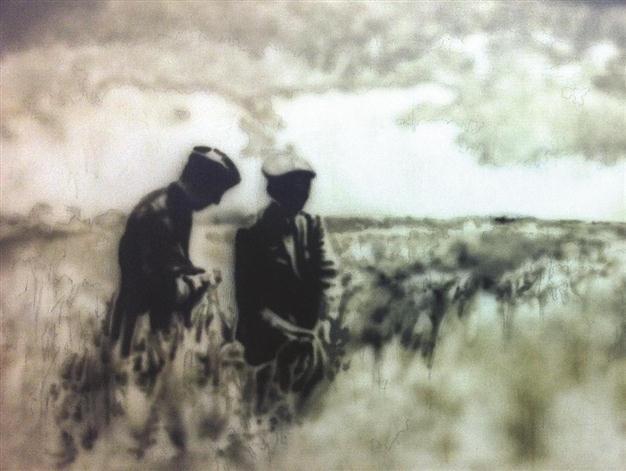Artist reflects resistance, war, history on canvas in ‘Residue’
Hatice Utkan

Influential young artist Tunca Subaşı is using work from his new solo exhibition, “Residue,” to depict social, political and historical events.
“I have tried to let the audience find their own responses to these issues,” said Subaşı, whose exhibition opens Jan. 5 at Pi Artworks in Tophane.
In this exhibition of his recent work, Subaşı produces “residue-esque” impressions by reproducing photographic images which have helped generate historical memory.
The works of Subaşı mainly focus on the aesthetic of war. “I think that we are living – or I am – living in a war era and am constantly creating within such an environment,” he said.
The title of the exhibition, “Residue,” has a specific meaning for the artist. When creating the pieces, Subaşı referred to a number of historical books and archives. “I read documents regarding historical events and I chose to reinterpret the events and the process,” he said, noting that he realized all the documents he used were in fact “evidence” and historical “residue.”
Contradictions main subjectSubaşı tries to illustrate the contradictions between social layers and communal events originating from these contradictions as his main subject. His form is to paint figures without reference to anything else, yet the figures he depicts do not appear devoid of context. They are not motionless on the canvas surface; on the contrary, they point to actions going on beyond the surface.
The artist said it was possible to read the ironic language created by socio-political contradictions.
He produces new representations from documents heretofore marked as historical conjuncture, snaps these representations off from an understanding of “reality” and converts them into an ironic narration. “I am creating new things, from that which originally belonged to old things,” Subaşı said.
Subaşı combines past and present with his “residues.” “Those events became something else with my works,” he said.
Not only figuresThe historical events reflect present times with twists of irony to them, he added. “In my work I try to tell the audience there is no significant or fixed history, there are only historians.”
What the audience sees in Subaşı’s paintings are not only figures. “In fact, they are movements,” said Subaşı. The important thing about the figures is the feeling they “move” and have a say in history.
Subaşı reproduces, with stencil and airbrush technique, visual catchphrases. As much as the “residues” of the language, the artist disclosed narrates a holistic scene, and each work could also be interpreted in itself as an element of an event.
There are seven paintings in the exhibition. While preparing for the exhibition Subaşı used printed materials such as bills, banners and posters utilized mainly for propaganda methods. Subaşı’s exhibition will run until Feb. 25. k HDN
 Influential young artist Tunca Subaşı is using work from his new solo exhibition, “Residue,” to depict social, political and historical events.
Influential young artist Tunca Subaşı is using work from his new solo exhibition, “Residue,” to depict social, political and historical events.